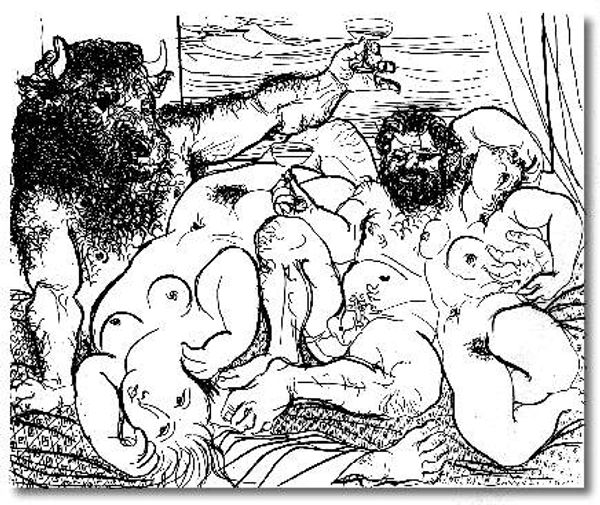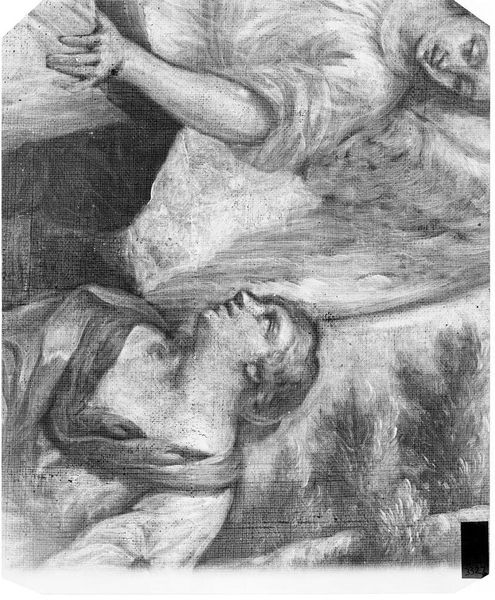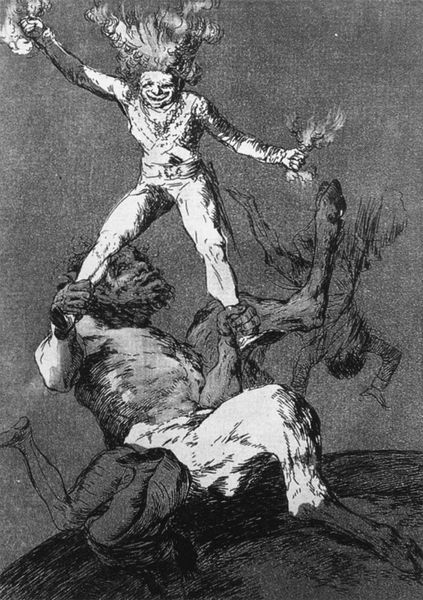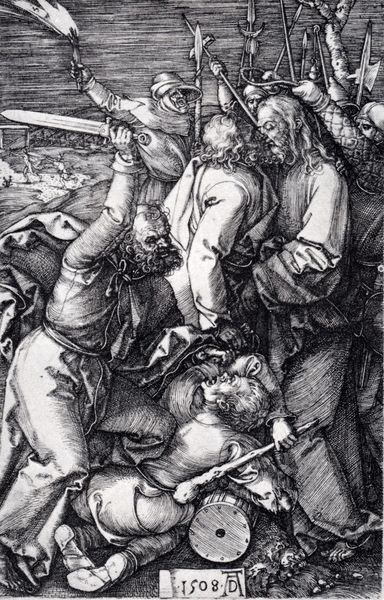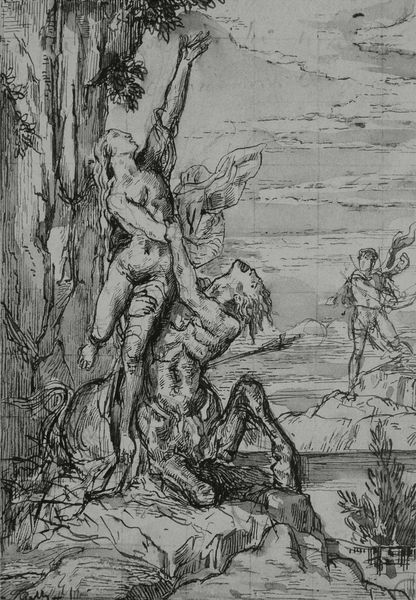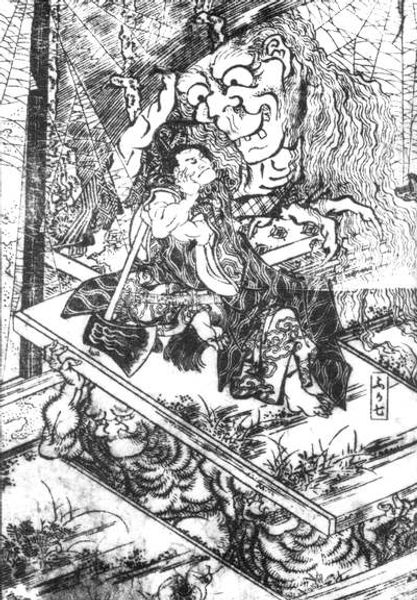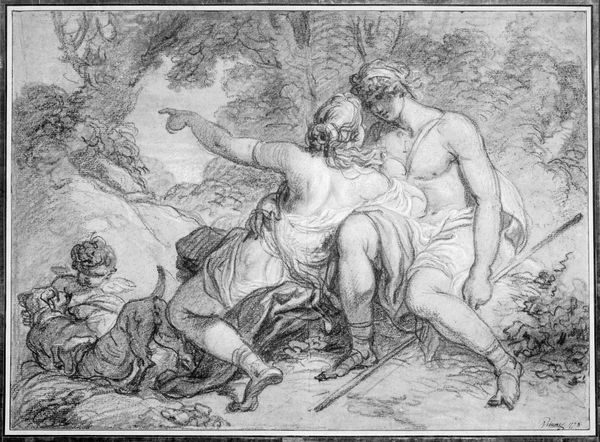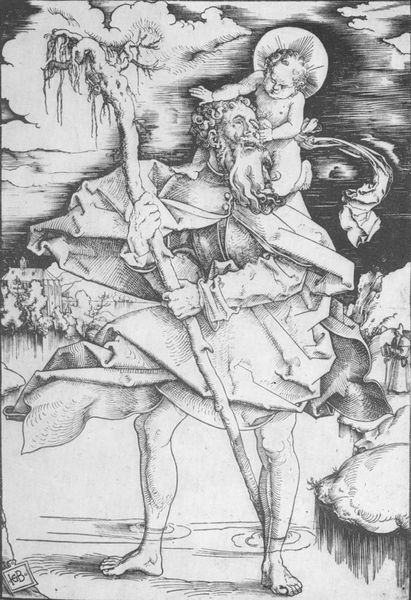
Copyright: Public domain
Editor: This is Titian’s “The Vicious Husband,” a pen drawing from 1511. The scene is… well, pretty brutal. One figure is clearly attacking another under a tree. What jumps out at you when you look at it? Curator: The immediate visual impact is violence, certainly. But I see more than just physical aggression; I see a narrative steeped in the anxieties of its time. The tree, for instance, acts as both a backdrop and a silent witness. What could it symbolize to a Renaissance viewer? Editor: Maybe the Garden of Eden and the loss of innocence? The setting does feel symbolic rather than realistic. Curator: Precisely. Think of the Renaissance fascination with classical themes. Might this be a reference to a specific story, perhaps from mythology or even the Bible? Consider the body language - the aggressor’s forceful pose versus the victim’s vulnerability. These are symbols loaded with cultural meaning. Editor: So, it’s not just a random act of violence but something much deeper, tied to historical context and recognizable symbols. Are the characters identifiable, or are they meant to be archetypes? Curator: Possibly both. They are specific figures in a narrative. Think about power dynamics that persisted during the Renaissance. Male dominance and its potential for abuse are ever present here, rendered through visual cues that resonate even today. Does that influence how you perceive it now? Editor: Definitely. Knowing the context changes everything. I initially saw it as just violence, but it’s more about a brutal illustration of social anxieties and enduring power imbalances. Thank you! Curator: Indeed. Images preserve cultural memory. Analyzing them is like archaeology, each layer revealing something new about our past and present.
Comments
No comments
Be the first to comment and join the conversation on the ultimate creative platform.
